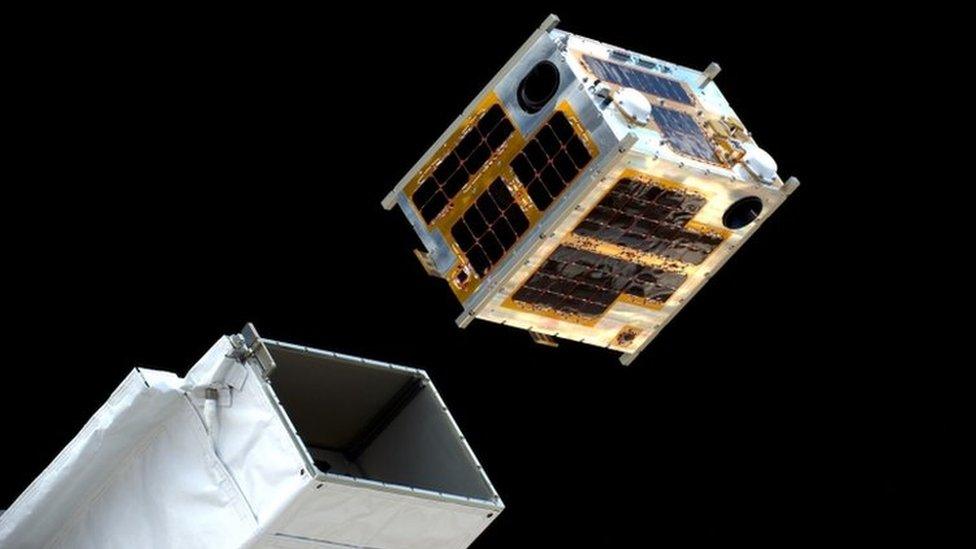Space Hub Sutherland planning application submitted
- Published
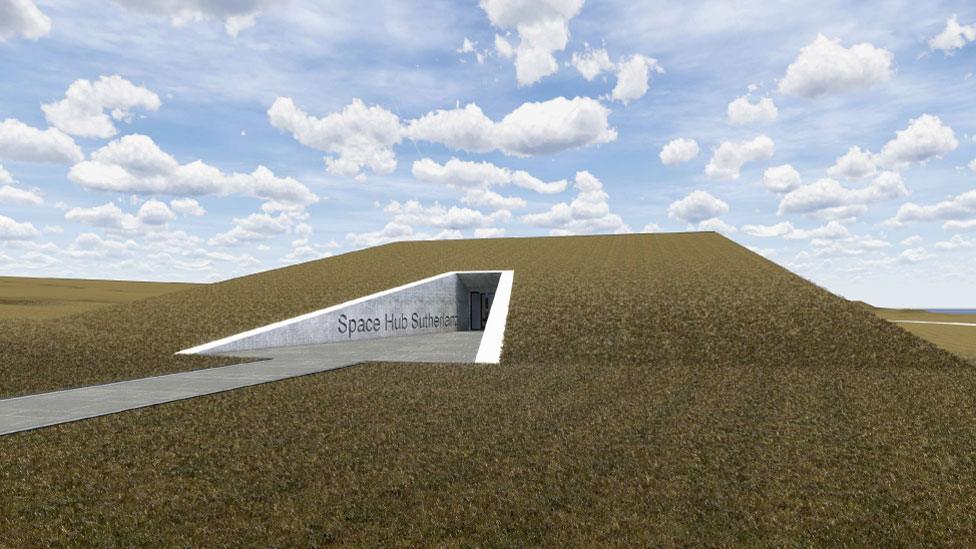
An artist's impression of the entrance to Space Hub Sutherland
Small satellites could be launched from the north west Highlands within the next two years, Highland and Islands Enterprise (HIE) has said.
The development agency has submitted a planning application for its Space Hub Sutherland at Melness, near Tongue.
Working with private companies, HIE has proposed building Europe's first vertical launch site.
It said the project would create 61 jobs in Sutherland and neighbouring Caithness - 44 of them at the site.
The roles would include mechanical and electrical engineering, weather monitoring, control room operations, ground services, security, management and marketing.
More widely across the Highlands and the rest of Scotland, HIE said a total of 250 jobs could be connected to the space port.
Commercial satellites
The planning application has been submitted to Highland Council.
If approved, up to 12 launches a year could eventually be made from the site. The rockets would carry small, commercial satellites that would typically be used for Earth observation.
There has been opposition from some residents in the area with concerns raised about the facility's impact on the environment.
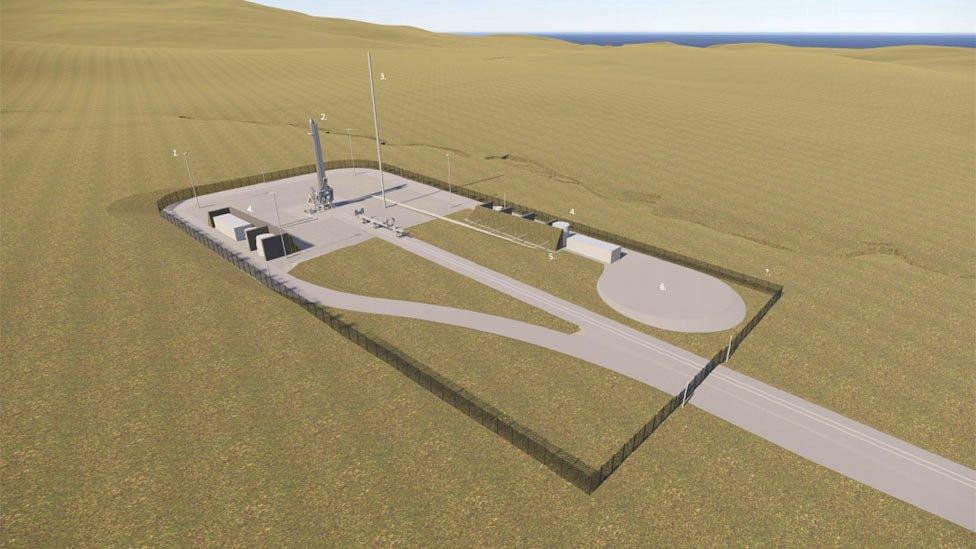
A 3D image of the proposed launch pad complex
HIE has approved up to £17.3m in funding towards designing and building the space hub. HIE would contribute £9.8m, the Nuclear Decommissioning Authority £5m and the UK Space Agency £2.5m.
The Nuclear Decommissioning Authority is involved because of its work to help create new jobs to replace those lost from the eventual closure of the Dounreay nuclear power site near Thurso in Caithness.
Designed by Norr Architects, the facility would comprise a launch control centre, a single launch pad and associated infrastructure, including roadways, fuel storage, office premises and antennas.
A temporary lightning tower would also be installed at the launch pad around flight days.
HIE aims to make the project carbon neutral and said it had spent two years gathering data and assessing potential effects on wildlife and the local habitat which is characterised by large areas of peatland.
Levels of light and noise that could be generated, especially around launch times, were also examined.
David Oxley, of HIE, said: "This is a truly unique and innovative venture that aims to create the first launch site of its kind in Europe."
- Published3 October 2019
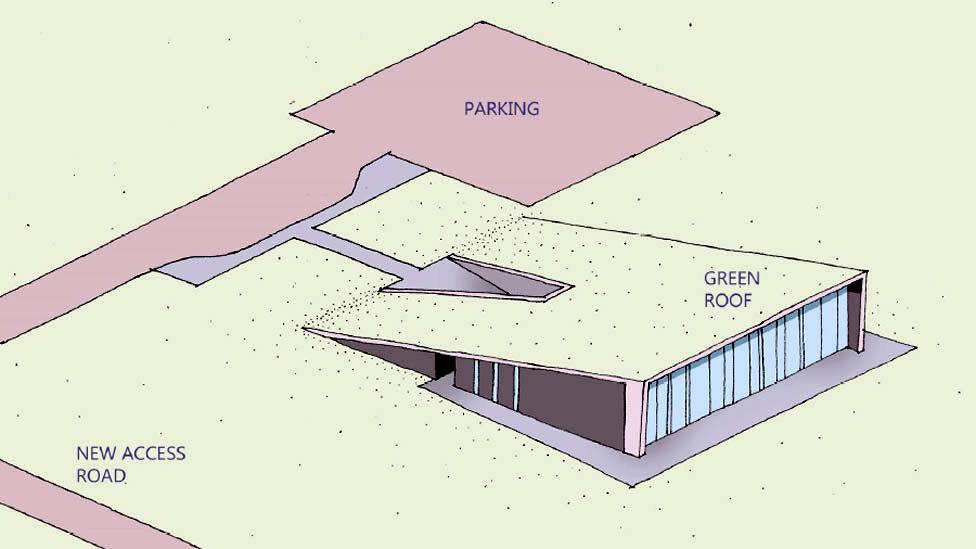
- Published2 October 2019
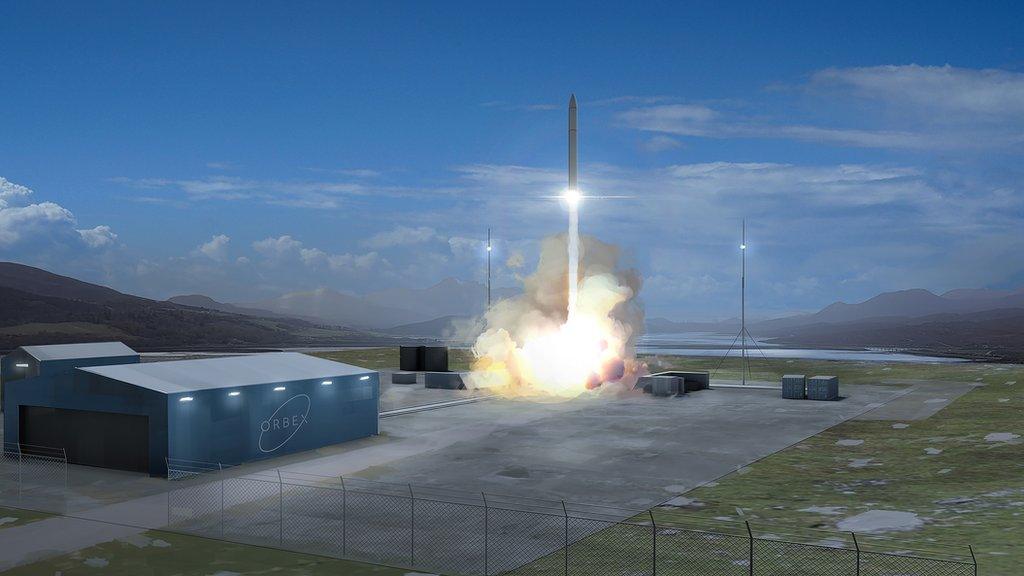
- Published12 September 2019

- Published1 August 2019

- Published15 July 2019

- Published11 July 2019
